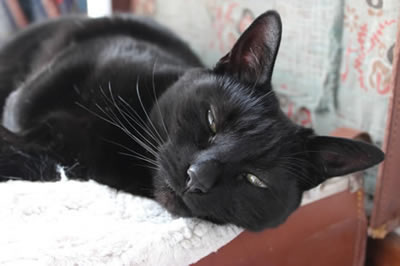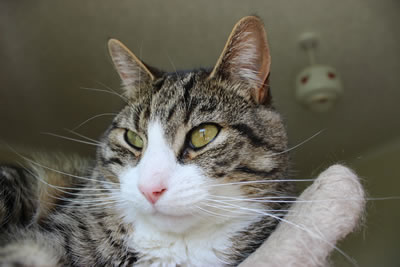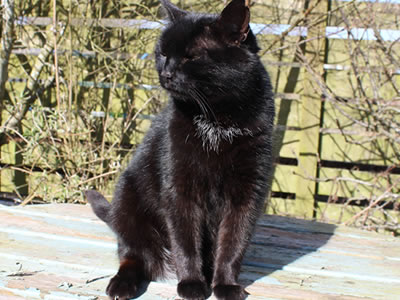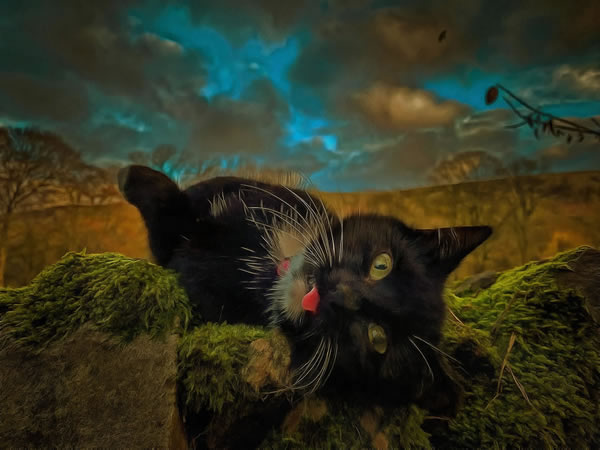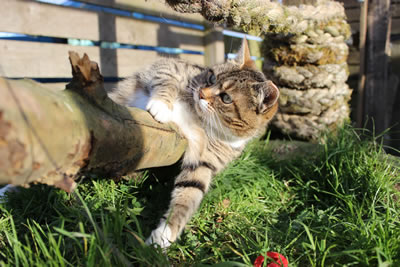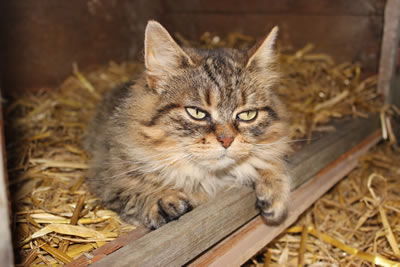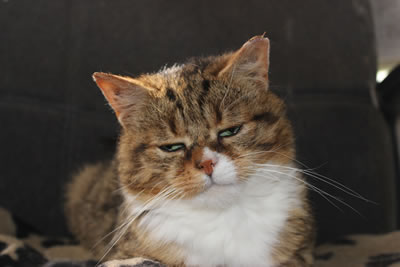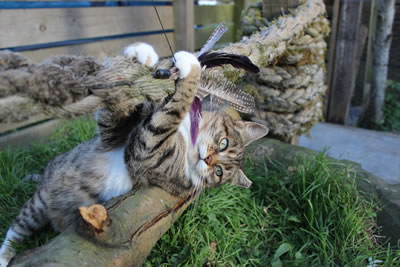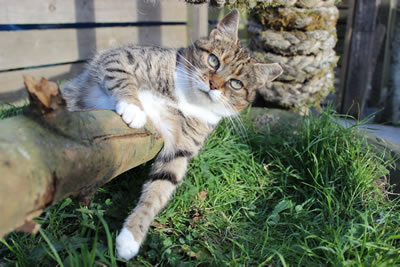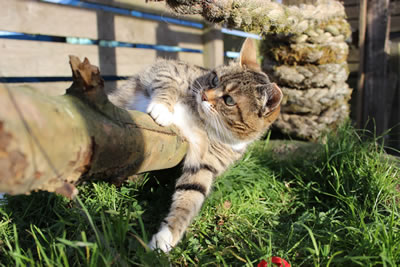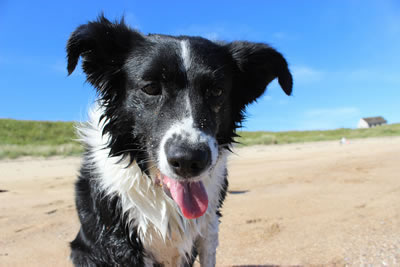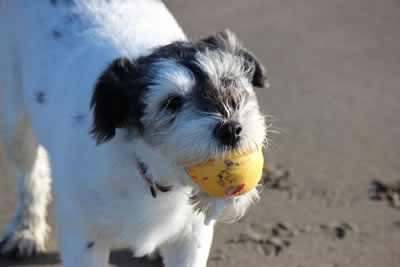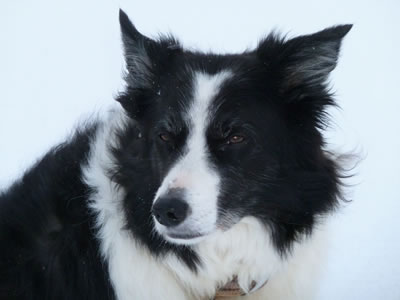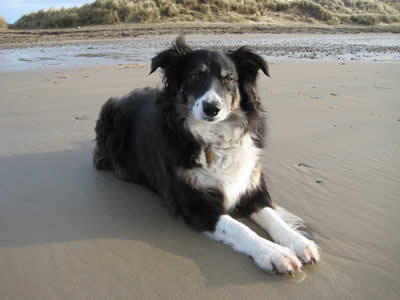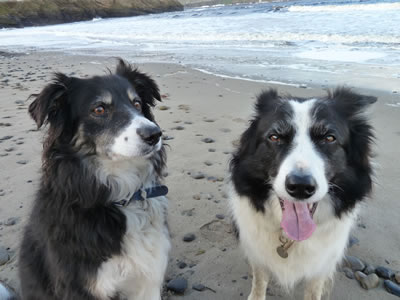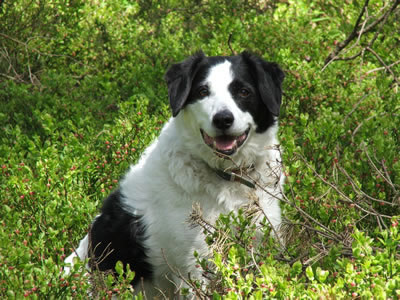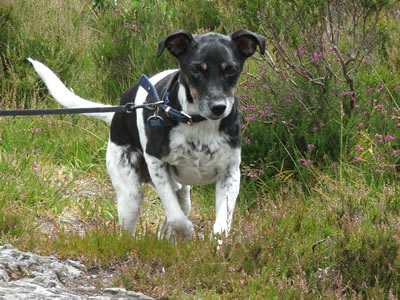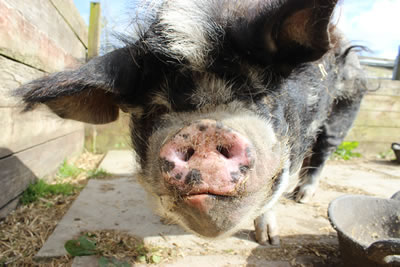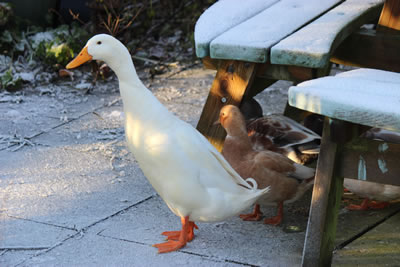Cats - Looking after Cats
Love them or hate them cats are a unique pet and all have very distinct personalities. The reason some people dislike cats include that they hunt and kill birds, the other reason mentioned is that cats do like to use other people’s gardens as their toilet. While both are valid reasons for cats not to be popular with some people most of us look beyond these two natural behaviours of cats and ideally try our best to reduce the damage cats can do to the garden bird population. The most common preventive measure is to have our cats wear a collar with a bell, giving unsuspecting birds that are being stalked ample warning that one of their mortal enemies is nearby. Other cat owners take more drastic measures and keep them as house cats, ideally with a secure outdoor space (catio) that the cats can enjoy while keeping them and our garden birds safe. If you have lost a cat due to being lost, or killed on the road, you may appreciate that keeping cats indoors with an outdoor catio / secure cat enclosure is becoming more popular.
For working cats, that is ones that live in the countryside, on farms, industrial settings such as warehouses, the idea of putting a bell on them kind of misses the point. The cats in this environment have a job to do, that is to keep the vermin numbers under control – that is they catch and kill mice and rats around farm steadings, barns and other areas where vermin cause a problem. Unfortunately, birds are sometimes killed, we should remember that most of these cats will kill vermin and not birds.
Feral cats are ones that are basically wild, and they hunt to live, as they often do not have any other food source. If you do have a feral cat (or group of feral cats, called a colony) then one thing you can do is to regularly feed the cats. This reduces their need to hunt for food and also helps keep the cats healthy, especially during winter months.
We have, at time of writing 6 cats, two are house cats, one is our farm cat, she gets out during the day and kept in at night, and our latest three cats are rescues from the local cat rescue charity who we rehomed in July 2020. My request to Cats Protection was for some feral cats to help keep the vermin population under control (we have nearly 1.5 acres and feeding our pet pigs, chickens and ducks attract vermin). Due to covid-19 closedown the charity had to rehome 5 barn cats and we were asked if we could take three.
They turned out to be delightful cats that were used to living in a barn. They are not house trained so had to be kept outside in a small run / house built in our wood shed. Due to their friendly natures we decided that it was too risky to allow them to roam the farm areas as we have a main road nearby. Having made that decision we built a secure outdoor run attached to their indoor run so that they could get more exercise and enjoy the sunshine. Another reason was to keep the birds on our land safe.
For most of the time we have lived in the countryside we have had reasons not to have cats, one being that we had adopted a retired collie sheepdog that absolutely hated cats. Having a dog that hated cats, along with the nearby road, where several cats from the steadings had been killed over the years, were the main reasons we never considered having a cat in our lives.
In 2016 our lovely, yet cat hating dog, died due to old age when she just over 14.5 years old, a week later I found a badly injured kitten on a road that I rarely visited and that was the start of our cat adventure. Toby was possibly a barn cat, or feral cat kitten, and the vets who treated him for free agreed we could adopt him. He was young enough at 6-8 weeks to be domesticated and we have kept him as a house cat since then. The other cats just moved in for one reason or another, one was left when their owners moved away, the other cat decided to move out of a perfectly lovely home when they adopted a feral kitten. She moved into our shed and we eventually (6 weeks later) found out who her owners were and they allowed us to keep her.
I now can’t imagine being without cats, they bring something vastly different to the love and affection given by our dogs and other pets.
Feral and Barn Cats
Most of us have experienced being close to a cat, you know the one that comes up to you, purrs and rubs against you wanting to be given affection, and loves being stroked. If you are really privileged, they will jump up and sit on your knee as you continue to talk to it, and clap it. The purrs nearly shake the room, they are so loud, the cat obviously loves you.
When you put down their food, they immediately show approval by coming over and eating it, the cat obviously continues to show its love for you and will go onto a window sill, or other favourite place, and sleep for hours.
When you have time, you get out the cat toys and play with your cat, which they show great interest in chasing and playing with – happiness positively glows from your cat when you play with them. You get this warm inner glow of feeling happy seeing your cats having so much fun and you wonder how on earth you could have ever been without a cat.
Then you meet up with a feral cat. It may consider eating you, it certainly has no interest in being clapped or being your best friend. Usually a feral cat will not come close to you, so there is no chance you will be able to catch it, or pick it up if needed. There is nothing wrong with this cat, it is just not used to people and is wilder than your domestic moggy. A feral cat is interested in one thing from you – food, and somewhere warm and dry to sleep.
A barn cat is a cat that is used to being around people, living often in a farm building or other outbuilding. They may or may not be friendly to people and are used to being fed regularly. Barn cats are often encouraged around farm buildings to keep down the number of mice and rats, they earn their keep in rodent control. A barn cat may well be very friendly and come up to you for cuddles.
What is the problem with feral cats? The problem is that these cats usually have not been neutered or spayed and will breed, the kittens will do the same and within a relatively short time a small feral cat population can grown into dozens or even hundreds of cats. These cats are not inoculated against disease, while inbreeding can also cause inherent disabilities and illness. Male cats will often fight with other males within the colony, or elsewhere, causing injuries, or spreading potentially fatal diseases that will not be treated by a vet or owner,often leading to disfigurement or a painfull death. As the colony gets larger the competition for food (mice, rats, rabbits and birds) will get greater and eventually the colony will spread out looking for food, bringing disruption to nearby households that have domestic cats.
Fortunately, where we have cat protection charities, they often carry out catch, neuter and release. This involves putting out cat traps, baited with food, and when a feral cat is caught they will take them to a vet who will check to make sure the cat is healthy, healthy cats will then be neutered and where appropriate released where originally trapped.
Due to the increase in feline leukaemia in some areas with feral cat colonies some cat rescue charities now have decided to euthanise feral cats that have this deadly disease. You may or may not agree with this in principal, yet it is to try and reduce the spread of diseases among feral cat colonies and to domestic cats. Where a cat is healthy, they are often given an inoculation to give limited protection before being released back where they were originally trapped. This procedure of trap, neuter and release helps keep the feral cat population to a manageable level.
Where numbers of feral cats are not manageable the cats that have been caught and neutered may be rehomed elsewhere and will be offered to farms and rural properties where they can be provided somewhere to sleep, and most importantly fed daily. While feral cats can and do catch and eat a lot of mice and rats, they need to be fed on a regular basis to keep them within the area they have been rehomed. It also means that they will not go hungry in winter months when the amount of prey is reduced. It also helps build up a loyalty between the feral cat(s) and the property owner.
Our experience of having a feral cat was accidental. During one winter we had a bit of a rat problem and they were so large I was using a human rabbit trap to catch them. One morning I went up to feed out pet kunekune pigs and found a cat in one of the traps. It must have been very hungry as all I had used in the trap was a piece of bread. I transferred the cat into a dog crate and gave him some food and contacted our local Cats Protection group on Facebook. As it was just coming up to Christmas, they asked me to keep the cat until they could get a vet appointment. We set him up in our glasshouse and connected up two large dog crates for him. One side had his toilet and food, the other a cat igloo. He settled in fairly well.
Due to the holidays the time we had to keep him confined extended to over the New Year (4 weeks) and during this time we noticed he brought up worms when he was sick. This meant we had to try and treat him. This turned up to being a hard task as we were due to put on a liquid worm treatment on his neck, behind his head. The plan was I would catch him and my wife would apply the treatment to his skin. What could go wrong? even though I was wearing heavy duty leather gloves he managed to bite me in my thumb and escaped into the glasshouse before we could treat him for worms. This was a week before his vet appointment (neutering) and during the night he managed to dig himself out of the glasshouse and escape. I continued to put food out for him which he ate every night. I also managed to use a powder based worming treatment that he also had with his food. Unfortunately, he would not come near me so it did look a bit problematic about getting him to the vet. I also ended up at Accident and Emergency when my thumb started to swell - an antibiotic jag sorted the problem.
I asked Cats Protection if they could lend me a proper cat trap and I put this out under cover for several nights and managed to trap him during the night before he was due to get his vet appointment. He was checked over by the vet and had no microchip, and was an intact male, he was neutered and flea treated and we got him home that evening. He was back in his double dog cage in the glasshouse, yet again, as he needed a few days to recuperate from his operation. A week later he managed to get out of the two cages and into the glasshouse and again he dug himself out of the glasshouse – Jazz was out and as he was fit and well fed, we did not try and catch him again.
We continued to feed him every evening and he would appear just before dusk and eat his food. We had created a warm and dry area for him to sleep however he preferred to sleep down around the farm buildings. Jazz was a delight to see when he appeared occasionally, and I saw him around once or twice every 6 weeks. He ate his food regularly and there was evidence of his adventures around the farm buildings with the remains of dead pigeons and crows in the old buildings. The number of rats on our small croft also remained low – so he was doing his job of vermin control.
Jazz remained around our property for nearly two years until sadly he was injured and died. He never came close to me, the nearest would be around 10 feet (3 metres) and very occasionally he talked to me by mewing. I adored this wild boy and missed him when he died.
A year later I decided I wanted another feral cat around the croft (our small bit of farming land in the Highlands of Scotland) and we contacted our local Cats Protection team to see if they had anyone available. This was in the spring of 2020 and the start of the covid-19 pandemic. The charity and the vets were all in close down and they suggested we could take 3-5 cats from a feral colony they were needing to rehome when they got up and running again. I started getting things planned for our new feral cats and decided to build them a cat house and run within our wood shed. The plan was set and I had a couple of months to build the fenced in run, or so I thought.
We got a phone call asking us if we could take 3 cats that were an emergency due to the death of their owner after a long illness. The cats had been locked in a barn for 5 months and needed to be rehomed immediately. My plans for a leisurely build of the cat run had to be brought forward and I had a week to get it built. A week later I had to go to the vet to pick up the three cats that had been neutered that morning. And the start of another adventure with cats. I expected feral cats and ended up with far friendlier “barn” cats – that is cats that are used to human contact, just a little shy.
The three were happy to get into their run / house and they ate the mixture of tinned and dried cat foods I put down for them. They were in a bit of a state, two of them badly needed brushed and I managed to do this after a few weeks taking brush loads of dead hair off Bobbie and Kim, the third cat, Meg, appears to be the mum of the other two and did not need brushed. Over the weeks we built up their trust and after 4-5 weeks Bobbie even allowed me to stroke and brush her – when she started to purr after 6 weeks it felt like winning the lottery.
This rehoming of three “feral” cats turned out to be three domesticated barn cats that had lived on a farm that was over half a mile away from the main road. They were used to people although possibly had not been given a lot of attention due to their owner being so ill. They were not house trained and this along with the fact that we already had 3 cats and 2 dogs in the house meant it was not a practical to contemplate trying to have them in our home. I was becoming increasingly worried about letting them out to roam freely due to the nearby main road next to our property as they were obviously a small family group and probably would stay near each other if let out to roam. I was worried that the three of them could end up on the main road (80 metres away) and get injured or killed. The decision was made to keep them in their run and build a catio, or outdoor run.
To build the cat run / catio I had to use old posts that had been used for different purposes in the past (some were from an old chicken run) as financially we could not afford to buy a lot of new materials for this project. It was expected to take a week to build and took three weeks – due to weather and other tasks that had to be done. The three cats just love the extra space and are now enjoying the grassed areas while lying in the late summer sunshine. The catio is large enough to keep them busy with climbing and run about areas. We also go into the run and play with the cats with cat toys. It is a fun area for them and for us as well.
Even though we have three amazing cats (Toby, Heidi and Sooty Sue) that live with us in the house, our three outdoor recent rescues have added yet more happiness to our lives. The three amigos, Meg, Bobbie and Kim are so much fun to play with and seeing them get more trusting is a great privilege. If you have space in your garden (a shed or garage) or farm then please consider offering a feral cat a home. We are still thinking of asking Cats Protection for a “proper” feral cat to help keep down the vermin to replace Jazz as we ended up with three spoiled pussycats rather than feral cats.
We will keep adding pictures of our “barn” cats and other cats as a photo blog and we hope you enjoy seeing the pictures of our cats, and hopefully inspire you to adopt a feral or barn cat, or a house cat that needs a home. If you would like to help feral cats, yet do not have the location to keep them, why not help by contacting your local cat rescue charity to see if you can help them by raising funds for them, or give them a helping hand to catch, neuter and release feral cats in your area as a volunteer.
Dogs
I was told of my first experiences with a dog, when as a toddler I managed to get out of my gran’s garden and go across a road to where the small burn ran through an open park area. They found me happily playing near the water with my gran’s black Labrador watching over me. As an older child my parents had a long-haired Alsatian, or German Shepherd and I believe my love of dogs continued as Sheena was an amazing dog, clever, friendly yet protective to her family. My parents then had a miniature dachshund, and yet again a dog with a lovely friendly nature. As an adult I was in my 30’s when we got our first dog, a mixed collie cross. Over the years our best friends have come and gone, leaving fond memories and pictures. It is sad losing a pet, especially a dog, yet that is the nature of life (and death) and one has to remember to keep the good times in our hearts and to continue to love our current pets.
I often feel uncomfortable calling a dog (or any of our other animals) a pet as it implies ownership. When a person owns something, they have control over what he/she does to that object – and while most people think of their animals as pets in a positive and loving manner, others look upon the animal as an object that can be kept or discarded, simply as they own it. For this reason, while I do refer to animals as “pets” for convenience I personally look upon our dogs, cats and “pet” pigs as companion animals. They are part of the family and are looked after as much as we possibly can.
At time of writing we have two lovely dogs, both were rehomed, one had been passed around 3 families before she was 14 months old. Luckily a lovely person helped to rehome her with us after her last owner could no longer cope with her behaviour. She has turned out to be a lovely friendly and trusting dog, although it did take some patience helping her overcome her fears of people and other dogs.
I hope you enjoy our stories and pictures of our dogs on our happy waggy tails website, as well as suggestions on looking after your dogs. We strongly believe that every dog is special and should have a loving and caring home, so we promote adopting and rehoming, rather than buying expensive dog breeds. You will find a cross-breed dog will give you as much love as a vastly expensive dog you just purchased. Looking for a dog or a puppy, then ask at your local dog rescue, or look online at one of the main dog / animal rescue charities in your own country.
Looking after your dog
Looking after your dog's teeth | dog teeth cleaning
This is one of the easiest ways to help keep your dog in good health as most of the problems caused by poor dog dental hygiene can easily be prevented by regularly cleaning your dog’s teeth with a dog toothpaste or gel.
Cleaning your dog’s teeth once a day, or better still twice a day, will help reduce tartar building up on your pet’s teeth. Tartar can lead to tooth decay and expensive vet bills when treating canine teeth. Another reason is that it helps encourage healthy gums, better breath and reduction of tooth decay and gum infection.
Another suggestion is that feeding your dog’s good quality dried dog food (kibble) rather than wet food will also help maintain your dog’s teeth and gums in good condition.
To clean your dog’s teeth, all you need is a toothbrush and doggy toothpaste, a human toothbrush can be used for this or you can buy a dog toothbrush from your pet store and this will often be better as the brush head is usually smaller. Dog toothpaste should be used as they do not contain additives that can be harmful to dogs. It is best to buy good quality dog toothpaste from a well-known manufacturer.
When starting to clean a puppy or older dog’s teeth for the first time you may find it easier to use one of the rubber teeth cleaners that fit onto your finger. Obviously, this is only practical if your dog allows you to touch and inspect their mouth. It is probably better to use a doggy toothbrush and you can help overcome a dog’s natural suspicion of the toothbrush by allowing them to lick the toothpaste and when you eventually get the toothbrush in their mouth allow them to chew it. Eventually you will get your dog to allow you to spread the toothpaste over all their teeth, especially the teeth at the back, and they will look forward to getting their teeth cleaned twice a day.
In older dog’s that have a build-up of tartar on the base of their teeth you may want to start by using a tartar busting gel that is applied directly to the teeth.
By cleaning your dog’s teeth daily you will help reduce health problems that can occur when a dog has tooth decay and gum disease. Vet costs to remedy these conditions can be very expensive, prevention is definitely better than a cure.
Dog Grooming
The simplest, cheapest way of grooming your pet is to brush your dog daily, or at least twice a week as this reduces the build up of old hair and mats that can cause your dog discomfort. While some dog breeds that have long hair do not need to have their hair cut, most do need to be brushed to ensure that hair does not built up into tangles that can turn into thick mats of dead hair. These thick mats often can cause your dog to have discomfort, it holds dirt and may even can lead to overheating in warm weather. Hair matts in severe circumstances can even effect a dogs ability to walk and run around.
Mats in dogs look awful and is a sign that the animal has not been looked after, or at least overlooked. It leads to a number of problems and in certain breeds can lead to the animal overheating in warm weather. It can cause your dog discomfort and also hide underlying skin conditions that need treatment. The best way to start is by simply brushing your dog on a regular basis. When the hair grows too long, book the dog into your favourite dog groomer for a proper hair trim. Some people can cut their own dogs’ hair and the equipment to do this is available to buy online. Personally I would leave it to an experienced dog groomer.
How often should a dog be booked into a dog groomer? This depends on your dog breed, it also depends on whether the dog breed has grooming to keep a specific style (poodles etc) or if it is to keep the dog comfortable, especially in warm weather. In some cases, it may be every 6 weeks, for other dog breeds it could be every 3 months or longer. Most reputable dog groomers will give you an idea of how often your dog should have a visit.
You can of course give your dog a wash and a shampoo using doggy shampoo. In our case the dogs tend to get a shampoo washonly if they have rolled on something smelly, otherwise it is a swim in the sea for their regular wash.
Pet Pigs
Our adventure in keeping pet pigs started accidently when one of our farmer neighbours came to our door with a one-day old kunekune piglet. The very cute piglet was the runt of the litter and was not feeding even though he had been encouraged (by hand) to do so. We were asked if we wanted a piglet to hand raise as they did not have the time to do so. I believe our hearts ruled our heads and we agreed to hand-raise him.
As we had already seen the mum, Gretel, we did appreciate that while they are a relatively small breed of pig, they are still big, so we were under no misconceptions on what was ahead of us in regard to the outdoor space required, or the size he would grow to. He was no micro-pig. That day we adopted (we actually paid for him) our first kunekune pig, and called him Geordie.
Looking after a 1-day old piglet involves hand feeding them supplement milk (not cow milk), from the vet or agricultural supplier, it comes in a dried formula similar to baby milk. We also gave him some of his mum’s milk to ensure he had some colostrum. Colostrum is a pre-milk fluid produced in the mammary glands of mammals that have recently given birth. Newborns have immature digestive and immune systems, so the enzymes, antibodies, and growth factors colostrum provides promote growth and fight disease (reference: colostrum). This also meant feeding during the night – so it was just like raising a baby, except he looked cuter.
Raising Geordie has been an adventure, and at 5 weeks old we decided to buy one of his brothers to keep him company. A year later we also adopted his mum, Gretel, to give her a retirement.
Over the years we have had the pigs it has been a pleasure to keep them as companion animals and they have added another bit of character to our home and smallholding. Kunekune pigs are vegetarian and eat grass, they also need to be fed appropriate small breed pig food and supplementary fruit and vegetables. It is not cheap to keep pet pigs, this along with veterinary costs should be kept in mind when considering having pigs as pets. They also need an appropriate amount of outdoor space to roam and graze on grass. The ideal space requirement is around 1 acre of grass per pig, although we personally have less than this and due to that we have reasonably high feed costs.
If you do want to have pigs as pets / companion animals then please remember that pigs are social animals and ideally, they need to be kept in pairs. If you do purchase male kunekune piglets and do not intent to use them for breeding then they need to be castrated before they are 5 weeks old. This is probably true for other pig breeds as well. Castrated male pigs are easier to handle and will not try and escape as much as frisky, intact, males. It also reduces fighting.
Keeping pigs in back gardens, small spaces or heaven forbid in your house, is not a good idea. Most pigs will grow into a large animal and they need space to exhibit their normal and natural behaviour. Some people on social media have raised the issues of animal welfare, and the high level of intelligence in pigs, by keeping them in their homes and showing how wonderful these animals are. Keeping pigs in your home, even with access to outdoor space, is not something I would recommend.
If you have the land available, the money and time, then certainly consider pigs, especially pot bellied and kunekune pigs, as companion animals to be part of your life. I would also suggest that you adopt / rehome pigs if you can, as people’s circumstances often change leading to animal rescues sometimes looking for homes for pet pigs.
Ducks
We are very lucky to live in the countryside on a smallholding (a croft) and this has allowed us to develop the space to keep ducks. Ducks do make for interesting pets, plus if they are female, they also lay delicious eggs. With a wide range of duck breeds to choose from you can find a breed that suits your own personal circumstances. Most duck breeds will thrive as long as they have space to roam, and a source of water - a pond or a small paddling pool, where they can get in and splash around. It should be noted that some breeds of duck are noisy and this may not go down well if you live near other people – our call ducks certainly know how to have a loud conversation with each other.
At present we have several breeds of duck, with 2 Runner duck drakes, male and female Call ducks and female Khaki Campbell ducks. They all have their own personalities and it is adorable when you see the ducks each having their own little groups – or pals, that they go around with. We have two Call ducks that go around with one of the Runner ducks. They do know and recognise each other (between the two Runners and the other 11 Call ducks.
Ducks can live for many years and this should be taken into consideration if you plan to get ducks as pets. In a farming / commercial situation most ducks and chickens are killed after 18 months as their egg laying numbers start to reduce. We allow our ducks and chickens to live out their natural lives, with most of our ducks being over 5 years of age at time of writing. Some must be around 8 years old – as we rehomed them 5 years ago.
What do you need to keep ducks? You need a secure area that is protected from predators (foxes can be a problem), a dry and secure duck house for them sleeping in during the night and an area for them to explore during the day. When putting in bedding, use straw for ducks and not wood shavings or sawdust – as ducks can, and do, eat the wood shavings and get ill, or even die.
Ideally ducks like having a pond to paddle and splash around in. If you do not have enough space for a large pond, then a smaller container that has clean water can be used – a children’s plastic sand pit filled with water is sufficient in some cases, or make your own. We do have a small pond (around 60 square metres), a small pool of 2 sq. metres and a couple of plastic kid’s sand pits that are used by our ducks in the two different duck runs. When making your own pond / paddling area for your ducks just remember you will need to clean it out on a regular basis, it will get muddy very quickly. The water needs to be kept reasonably clean as the ducks will not only paddle, they will drink the water.
Would I recommend ducks as pets? Certainly, I think they are a great animal to keep as a companion animal, and they will usually raise a smile and brighten your day when you watch them. Feeding is fairly straightforward, just use good quality hen food (layers pellets) and mixed grain feed. While ducks can and do eat bread, this should be restricted as part of their diet and possibly used as a treat, once a week at most. I have found our Khaki Campbells do love lettuce as a treat.
Chickens
Keeping chickens is a surprisingly easy and rewarding way to have companion animal(s) in your life, they are friendly and each has its own personality. It can also mean you have your own source of delicious eggs.
Due to the many chicken rescue charities, you can help provide a nice retirement to a commercial hen. Many of these birds may never have seen natural daylight in their short lives and when you rehome one, or more of these birds, you will quickly be amazed at how wonderful these animals can be as pets. Initially some of these hens may look awful, having few feathers if they have been kept in a factory farming situation. Don’t worry, they will quickly flourish, grow new feathers and often become very friendly. If you are interested in doing this just search Facebook for local rehoming charities near you who rehome commercial hens at the end of their production cycle. Most hens used for egg production are killed at the end of their short, useful, lives at around 18 months. Most of our hens have lived for 5-7 years, with our oldest hen now over 9 years old.
If like us you fancied raising chickens by hatching out your own chickens, then that can be a wonderfully rewarding experience and we have done this ourselves over the years. It is an amazing experience seeing and hearing the chicks hatch out after their incubation period of around 28 days. Then you also have the pleasure of seeing them grow up over the weeks to follow.
I do have to mention that the main disadvantage to hatching out eggs is that on average half of your incubated eggs will hatch as male chickens – cockerels. Over the years some of the best chickens we have had were our hatched cockerels, unfortunately it has also been the cause of problems as cockerels, as they get older can, and do, fight with other male chickens. This can lead to upsetting scenes with your cockerels covered in blood, and while it often looks worse than it actually is, it is not something you will want to occur. In some cases, cockerels will fight to the death, or at least badly injure each other. The solution to this is to rehome the troublesome cockerel(s) or dare I say it, (stop reading if you are a vegan) cull them.
It is a fact of life that, if you hatch chicken eggs, you will get male chickens. Rehoming excess cockerels can be done, especially if they are a pure or rare breed. Unfortunately, people are often left with a noisy and troublesome problem of having cockerels that they can’t rehome, and the only humane solution is to kill them (for eating). On no circumstances should these cockerels (or any excess or old chickens) be taken and abandoned in the countryside, or woodland. This is cruel and the birds will either starve to death or they will be killed by predators, usually foxes. It is also illegal.
If you do not want the problem with cockerels, and they are only a problem when you have too many of them, then consider buying hens only, or rehoming hens.
What about the noise? The good news is that you only get noise from cockerels. If you live in an area near other people (say within 100 metres), then the easiest solution is simply to keep hens and no cockerels. If you do have a cockerel already, then by providing the cockerel / hens with a chicken house that stays dark inside when closed, you may reduce the noise from a cockerel early in the morning – no guarantees. We can hear our neighbour’s cockerels that are over 500 metres away, obviously talking to our cockerels, this can start at 4am in the summer months. If you live near other people and want to remain on friendly terms, then go cockerel free is my suggestion.
Do chickens make good pets? Yes, they can and do make great pets / companion animals and it has been found that they are especially good for older people who are in residential homes, where they can get to handle and feed them. They are also good for children who will love feeding them as well as collecting the eggs. Hens that are used to being picked up and handled will often allow you to lift and cuddle them for a fair amount of time before they want down to continue with their own adventurous lives, scraping around looking for worms and edible bugs.
Do chickens need a lot of space? While it is ideal to provide a large run for your chickens, it is not always practical, especially if have a small suburban garden, or if you live near an area with foxes and you need to keep them in a fenced and secure area for their own protection. You can build your own secure chicken run, or buy a commercially available one. Hens that are kept in comparatively small secure runs, with a house, can be allowed out to roam around when you are out in the garden. Hens can be happy is fairly small runs as long they are provided an enriched environment to explore – raised perches, toys, scattered mixed grain to scratch and find, and treats. Chickens do love to sunbath and sunshine.
What do chickens eat? Chickens will eat most things you give them and you can certainly feed them non-meat leftovers such as tomatoes, grapes, lettuce and some bread. The majority of their food should be good quality hen food – Layers pellets and mixed-grain as a treat, go organic if you can afford to. If you want your hens to lay eggs then layers pellets provide all the nutrients they need to lay eggs with glorious yellow yokes. Hens also need to be provided with grit and oyster shell, an essential part of their diet that helps them digest food, while also laying eggs with strong shells.
Where do chickens sleep? Chickens need to be provided with a secure house that is safe from vermin and predators. It needs to be dry inside and kept clean. While we use straw to cover the floor of our reasonably large, homemade chicken houses, other materials can be used, including sawdust, to cover the floor area (sawdust should not be used for ducks). Hen houses should also provide a raised area for the chickens to roost, that is where they sit and sleep at night. You will need to clean the chicken house out weekly to remove the chicken droppings. You can compost this material and use it as fertiliser or compost in your garden.
Hen houses need to be closed before dusk to keep the chickens safe from predators – this can include rats, stoats, weasels, foxes and other animals depending on your country of residence. If you are sometimes not around to do this then invest in automatic door closing equipment that shuts the chickens in before it gets dark at night.
Chickens are easy pets to keep, they are fun to watch and can provide endless hrs of entertainment. When hens are younger, they will also reward your kindness with lovely eggs. As hens get older you will get less eggs, just more entertainment at their antics.
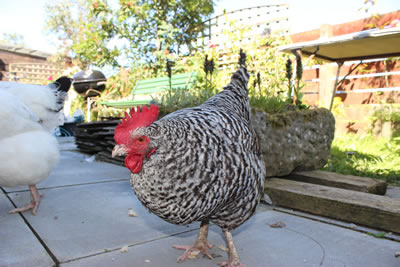
Our Chickens - picture of our Scots Grey hen
